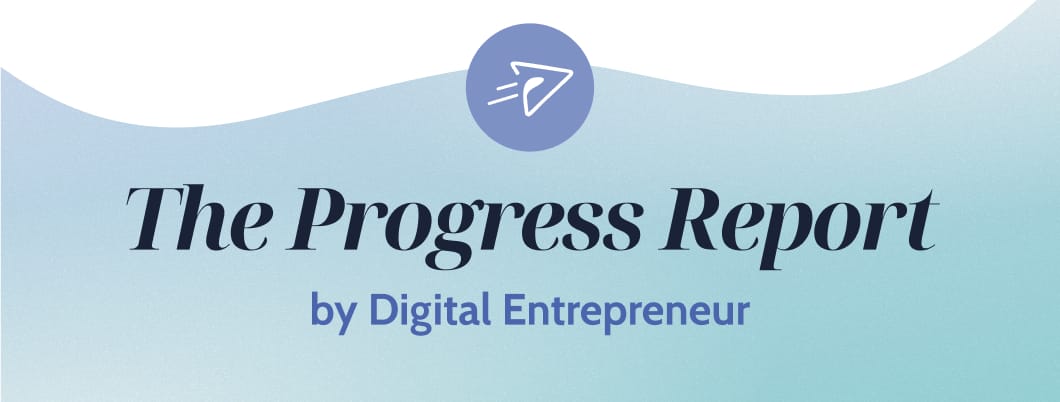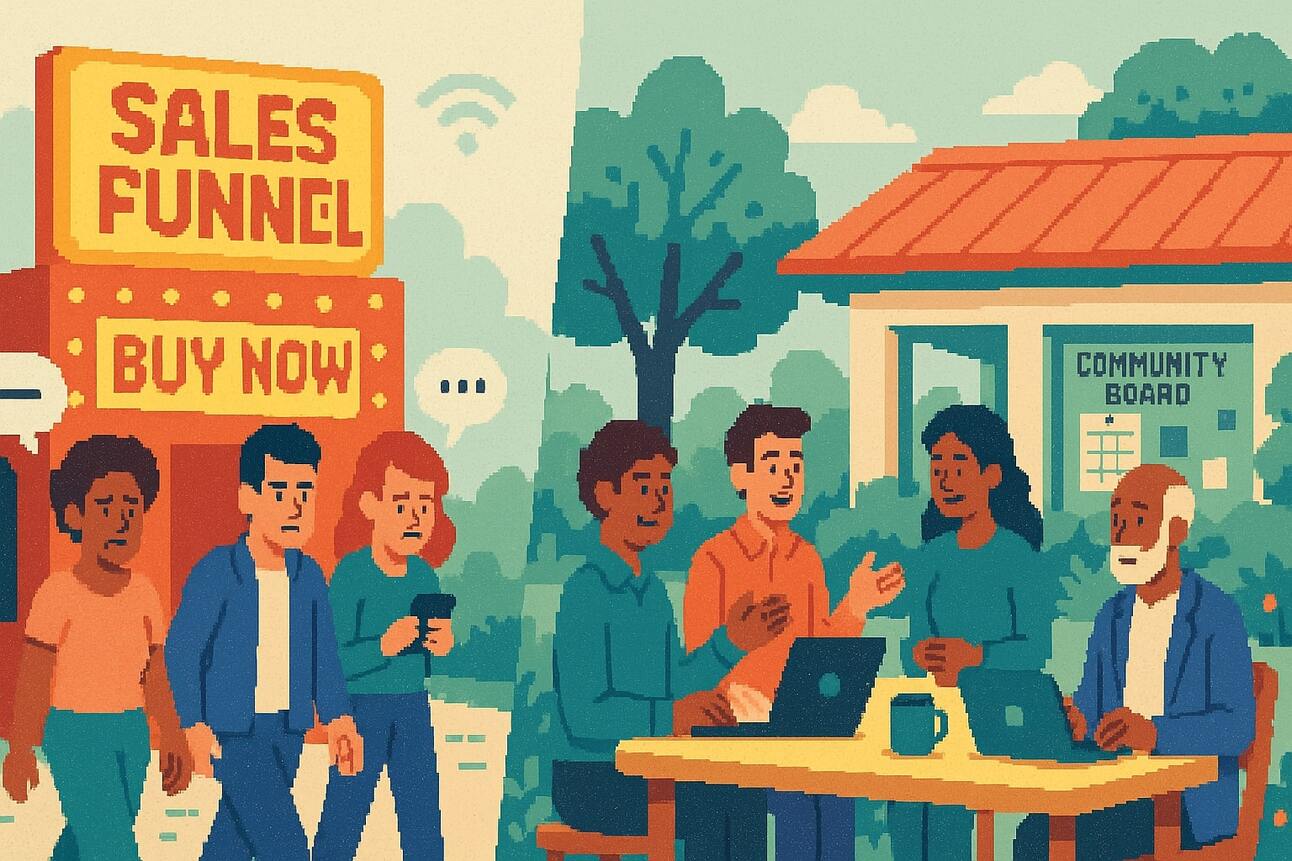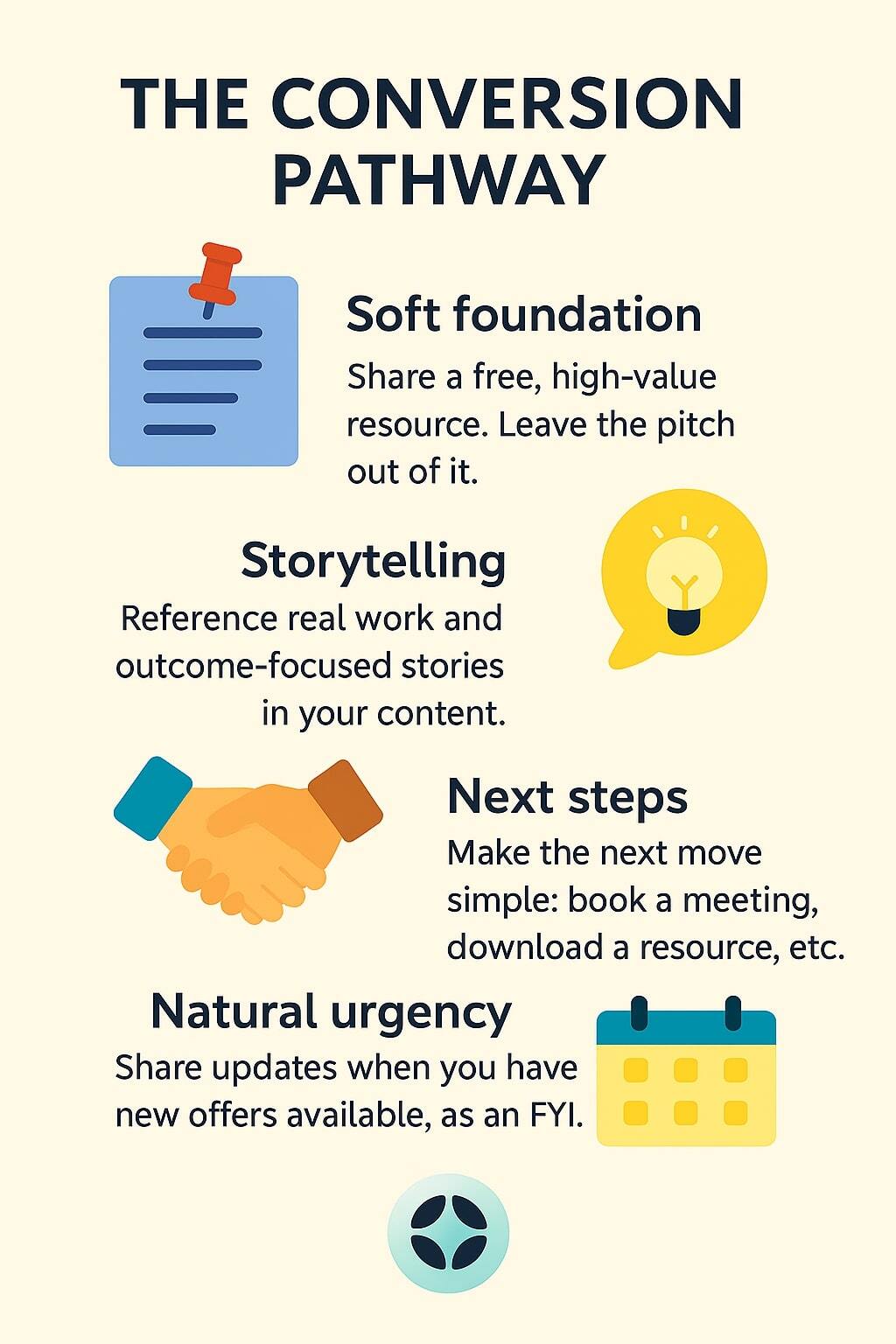
May 27, 2025
In partnership with

“Grow your list to 10,000 subscribers in 90 days!”
The subject line hit my inbox again. This was the fourth email of this kind, this week, from a newsletter creator I really enjoyed. What started as valuable weekly insights had devolved into a relentless sales pitch for his $2,000 newsletter course.
I'd been subscribed for months, eagerly reading their thoughtful takes on content strategy. But somewhere along the way, the balance shifted.
The helpful advice became secondary to conversion funnels. The genuine insights got buried under aggressive CTAs.
It didn't take long for me to hit unsubscribe.
Despite months of building trust with quality content, they'd torched our relationship by flipping the monetization switch too aggressively.
It’s a bummer, because community-driven marketing works. The stats prove it. But only when you resist the urge to treat your audience like an ATM.
In this newsletter:
Why marketers are on record calling community “critical to success”
How to weave monetization in, while leaving the ick factor behind
Sponsored
No more excuses. 100 side hustle ideas to get you started
The hardest part of building something new is rarely the work itself.
It’s knowing where to begin.
That’s where the Side Hustle Ideas Database comes in: a practical, no-fluff list of 100 business ideas, vetted to be actionable, realistic and tailored for solopreneurs who want to get started.
Whether you’re brainstorming a fresh offer, exploring a pivot or testing a niche, this resource helps you skip the overwhelm and get straight to building.
Weekly Insight

Last week, I talked about how community is valuable. No one came at me for that (thank you kindly), but I have a sneaky feeling you aren’t all convinced.
I live for the numbers, so, ahem.
Nearly 75% of consumers are “more likely to purchase more frequently because of an online brand community”
Consumers involved in brand communities spend 19% more than those who aren't
Nearly 1 in 5 companies report that over 30% of their total revenue is directly influenced by their online community
In summary: communities work.
As a bonus, they don’t require constant dollars to keep them switched on, like paid ads. Nor do they need you to churn out endless content, as SEO demands.
They do, however, require you to really know your audience, and be willing to learn from them.
Take Notion, which scaled to tens of millions of users with 95% of their traffic coming through organic and community channels. Instead of buying ads, they used early company resources to find out where power users were already hanging out (Slack, Reddit, Discord) and meet them where they’re at.
Importantly, they didn’t create a community to reap its benefits. They found where they already exist and worked to serve them. (A reminder that not everything has to be done from scratch.)
No expensive ad campaigns or complex funnels. Just genuine relationships that compound over time.
If you’re sick of me bringing up Notion (they do things well, ok? 😅), here are a few more examples:
Beardbrand went from blog to thriving ecom business by creating grooming content that rallied a niche identity (the urban beardsman).
Pubity started as a Gen Z meme account. They grew into a full-fledged media brand by treating every post like a conversation, and growing a deeply engaged social-first community.
Peloton has created such a strong
cultcommunity around their product that I barely even need to explain the benefits. Their official Facebook group has just under half a million members. Like ‘em or hate ‘em, you know about the company.
But, as promised last week, let’s talk about how community converts to revenue.
Content builds relationships.
Relationships are built on trust.
Trust drives revenue.
Intent to Action
You don't need a funnel. You need a pathway.
I’m being particular with my wording for a reason. Funnels feel transactional. Designed to move people from introduction to purchase as quickly as possible. Theoretically great, but forgets that it’s people buying from you.
(also, the classic marketing funnel doesn’t account for the messy middle… but I digress)
Pathways, on the other hand, feel natural. They create multiple touchpoints, allowing value, trust and connection to compound while keeping opportunities open.
And you, my friend, need that connection with them if they’re going to open their hearts (and wallets) to you.
Here’s how to build your pathway:

Start with a soft foundation
Step 1: Pin a genuinely helpful resource at the top of your chosen platform. Make it free, high-value and directly relevant to your ideal customer’s biggest pain point.
⚠ Don’t immediately try to sell people upon download. This isn't a Trojan Horse lead magnet, it’s just a display of your expertise. ⚠
Step 1.5: Of course, you don’t want to close doors to people who are quick to convert. Be sure to add a simple CTA in your bio: “Curious about working together? My DMs are open.”
Storytelling > selling
Step 2: In your content, share insights that reference your work in passing. Instead of “Here’s my new course,” try “I was helping a client yesterday with X challenge, and here's what we discovered…”
This way, you get to showcase genuinely helpful expertise, while making your services feel accessible and real. The best, most memorable commercials are entertaining.
Create dead-easy first steps
Step 3: When someone shows interest (comments, DMs, engages with CTA content), make the next step ridiculously easy. Offer a brief consultation, a relevant template or even just an option to reply-to-opt-in for more insights on their specific challenge.
Again, the goal isn't immediate conversion.
It's continuing the conversation in a more personalized setting — whether that be a newsletter, email or call.
Let urgency come naturally
Step 4: Rather than manufactured scarcity (“Only 3 spots left!”), let timing create natural urgency. Share when you're opening your calendar for new projects or launching something new, framed as an update.
⚠ If you’re finding that your content isn’t converting, applying pressure isn’t the answer. There’s no need for artificial FOMO when you’re offering something valuable, so, if meetings aren’t taking place, take a step back.
Figure out if what you’re offering is the problem, or if it’s the way you’re framing it. Talk to prospective customers, ask targeted questions and systematically test changes to your content based on their feedback. ⚠
The core focus of your community, content and marketing should always be value. The better you understand what’s valuable to your ideal customer, the better you’ll convert.
Sponsored
Seeking impartial news? Meet 1440.
Every day, 3.5 million readers turn to 1440 for their factual news. We sift through 100+ sources to bring you a complete summary of politics, global events, business, and culture, all in a brief 5-minute email. Enjoy an impartial news experience.
Closing Thought
The key is to reframe the way you think about your customers. They’re people, whose trust you need to earn and keep earning.
Remember that newsletter creator I mentioned in the beginning? They had everything right at first: valuable content, engaged audience, established expertise.
But they forgot their readers were real people, and started treating them like conversion metrics. Instead of building a pathway, they made their offer feel like the final destination; “either buy this or leave.”
So, I left.
I don’t mind when people market things to me. In fact, I kind of enjoy it. But (like any customer), I only enjoy it when it’s done right.
Lately, y’all have been asking me what you should prioritize. I don’t love continually responding with “it depends” so, next week, I’m going to tackle this exact problem. What to focus on at each step of the startup journey.
See you then.

